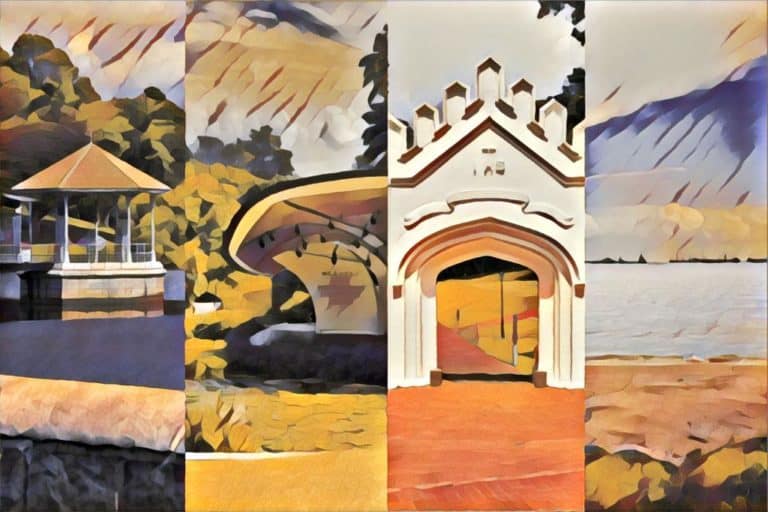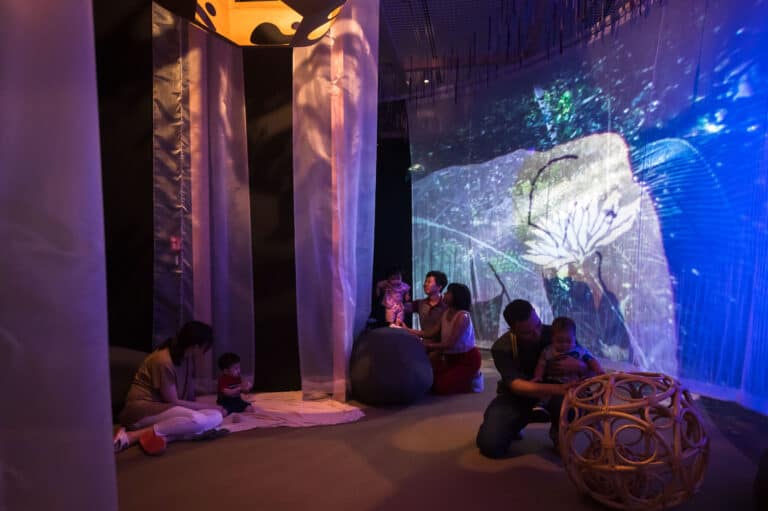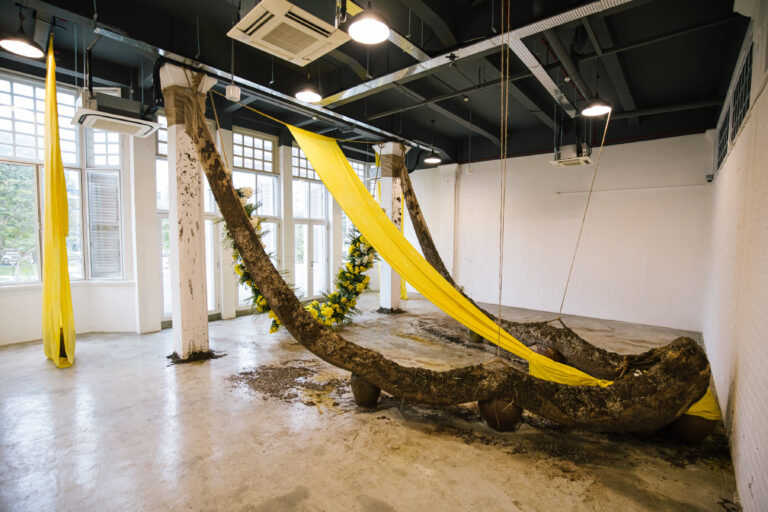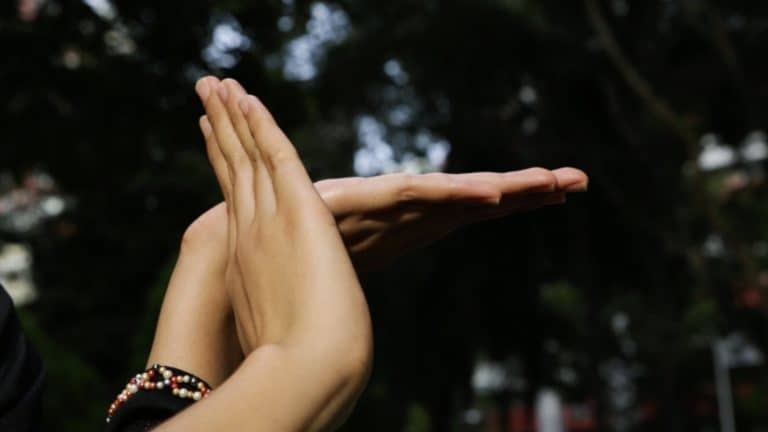I Wayan Bendi’s paintings are complex puzzles that both confound and delight.

Viewed from afar, they are busy, messy and unfathomable, save for the soothing wash of colour over what seems to be a repetitive pictorial scheme. Such repetition is devoid of a central focal point for the viewer’s gaze such that the scene is wallpapered in a two –dimensional fashion, over the canvas. The recurring patterns offer up a comforting regularity but also hark back to more traditional notions of Balinese painting.
Step closer to the work, and you’ll see that the busy mess is, in reality, a profusion of people, animals, vehicles, objects.. and well, life in general.
The two-dimensional layout of the painting and its profusion of images is something that is characteristically Balinese. Garrett Kam in his book Perceptions of Paradise: Images of Bali in the Arts, points to the idea of “busyness” or rame in Balinese culture– the word rame simply means “crowded, lively and bustling,” and aptly describes the atmosphere at most Balinese festivals and rituals. According to Kam, this notion tends to be illustrated in Balinese paintings by “crowds of people, decorated temples and lush foliages (sic) full of animals.” He notes that this is a feature of Balinese painting that has undergone little change, and is typically exemplified by the “maximum filling of space with little regard for traditional patterns of organization.” (Kam does caution, however, that this style should not be confused with mindless repetition or disorganized chaos as traditional paintings do contain clear hierarchies reflecting important Balinese cultural codes– for example, in upper sections of traditional paintings, skies and scenes in heaven have areas of open space; but lower sections are filled with events on earth or in the underworld.)
While the style referenced by Bendi is classically Balinese, the subjects depicted by him are clearly contemporary. His works meld tradition with the everyday, providing the viewer with a unique (and sometimes literal) lens through which to view and gain an understanding of, the Balinese psyche.
Humour is present as well in this work, as large-nosed tourists hunt and stalk Balinese folk as they nonchalantly go about their business:
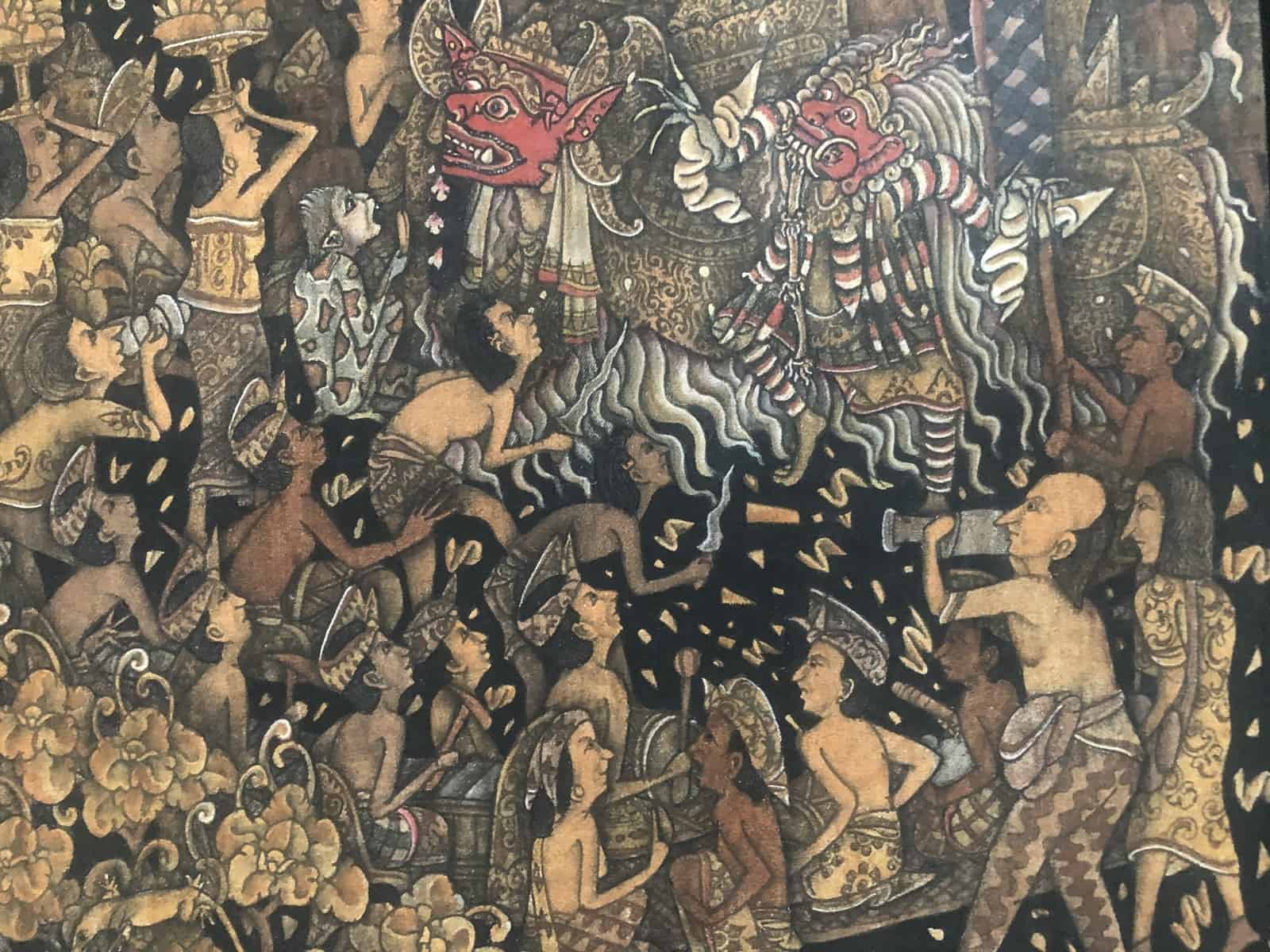
There is a clear acknowledgment here of the interconnectedness of Balinese identity with the island’s tourist trade—a relationship which arguably finds its roots in 1924, when Bali’s first recorded tourists landed on its shores. The island’s complicated relationship with tourism has been deeply researched. While the industry brings valuable economic gain, its trade-offs include environmental degradation, the unfair exploitation of labour and the displacement of long-time residents.
Leslie Dwyer and Degung Santikarma in their essay Posttraumatic Politics: Violence, Memory and Biomedical Discourse in Bali present an interesting take on Bali’s relationship with its tourist trade. They go as far as to opine that violent histories in Bali (for example, the bombings of the early-mid 2000s) enter into an “economy of memory,” in which particular versions of the past become “narratively packaged and standardized as tourism commodities, whereas other histories are viewed as lacking in value or even undermining the smooth functioning of the market.” With so many Balinese dependant on tourism for their livelihoods, it has been hard for survivors to publicly voice memories that threaten to destabilize the linkage stressed by government officials and the tourism industry, between foreign arrivals and the production of images of peace and revelry.
Bendi is not the only Balinese artist to have experimented with aesthetics that meld tradition with contemporary concerns–Adrian Vickers in his seminal tome Balinese Art: Paintings and Drawings of Bali 1800-2010, cites I Gede Widyantara and I Wayan Cekeg as younger artists who work in similar styles, but whose more “cynical reflections on fate and politics” offer commentary on their own circumstances, as well as those of Indonesia and the wider world.






